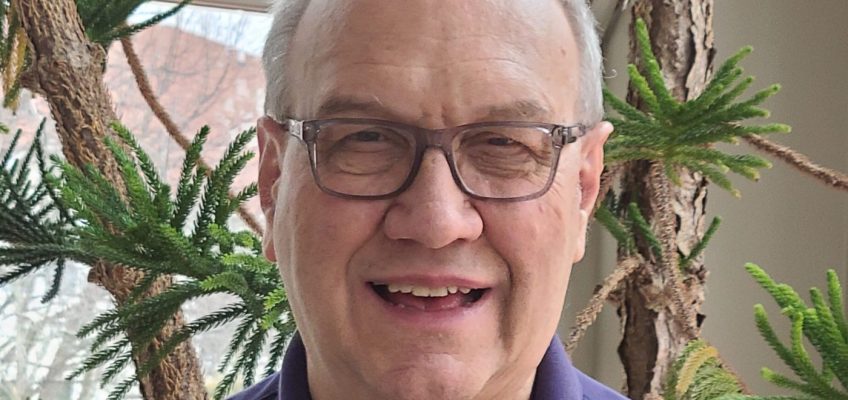By Shalina Chatlani, Stateline.org
More states are loosening vaccine mandates, scaling back vaccine promotion efforts and taking other steps likely to lower vaccination rates — even as a major measles outbreak spreads in Texas.
Meanwhile, public health experts worry that the confirmation of vaccine skeptic Robert F. Kennedy Jr. as secretary of the U.S. Department of Health and Human Services could add fuel to such efforts, leading to the resurgence of long-tamed infectious diseases. Kennedy has made numerous baseless or false claims about vaccines, including linking them to autism and cancer and saying there is “poison” in the coronavirus vaccine.
This week, the U.S. Food and Drug Administration, which Kennedy now oversees, canceled the upcoming meeting of a scientific panel that was slated to discuss next year’s flu vaccines. Also this week, an unvaccinated child died of measles in Texas— the country’s first measles death in a decade. The outbreak, which has spilled into neighboring New Mexico, has now grown to more than 130 cases.
Losing a pet can cut deeper than many people realize. Here’s how friends can help
An ice rink to fight opioid crisis: Drug-free fun vs. misuse of settlement cash
Texas measles cases rise to 146 in an outbreak that led to a child’s death
Measles is one of the world’s most contagious viruses. Here’s what to know and how to avoid it
Harsh flu season has health officials worried about brain complications in children
Already, vaccination rates are lower than they were before the pandemic. The COVID-19 vaccines saved millions of lives, but many Americans bristled at vaccine mandates, and disinformation and rapidly evolving public health advice undermined many people’s trust in scientific authorities.
Changing attitudes have had an impact: Vaccination rates among children born in 2020 and 2021 declined by between 1.3 and 7.8 percentage points for recommended shots, compared with children born in 2018 and 2019, according to a September report by the federal Centers for Disease Control and Prevention.
The anti-vaccination trend is “the antithesis of public health,” Dr. Scott Rivkees, a pediatric endocrinologist who served as Florida’s surgeon general and health secretary from 2019 to 2021, told Stateline.
“The role of people in departments of health and the role of people in health care and medicine is to promote health and make sure the public is safe,” Rivkees told Stateline. “There’s such a rich history of legal precedent, such a rich history of public health precedent, saying that society benefits by having individuals vaccinated.”
In all 50 states plus the District of Columbia, children must receive certain vaccines to attend school. Every state offers an exemption for children who cannot be vaccinated for medical reasons. Thirty states plus the district allow families to skip the vaccinations for religious reasons, 13 states grant exemptions for religious or personal reasons, and two states — Louisiana and Minnesota — don’t require people to specify whether their objection is religious or personal.
Five states — California, Connecticut, Maine, New York and West Virginia — don’t allow nonmedical exemptions.
Republican officials in more than a dozen states have introduced legislation to loosen vaccine rules or otherwise reduce their use.
Legislation in Arizona would make it easier to claim a school exemption, while GOP-sponsored bills in Connecticut, Minnesota, New York and Oregon would limit or prohibit vaccine mandates for adults.
In Idaho, a Senate panel last week debated a bill that would ban mRNA vaccines, including COVID-19 vaccines, for a decade. Montana and Mississippi lawmakers considered but defeated similar proposals. And in West Virginia — one of the five states that currently does not allow nonmedical exemptions to school vaccine requirements — lawmakers are advancing a bill that would allow religious and philosophical objections.
“Public health will always, to some extent, involve politics, because it requires resources,” said Dr. Paul Offit, director of the Vaccine Education Center at Children’s Hospital of Philadelphia. Offit serves on the FDA panel that was supposed to discuss next year’s flu vaccines.
“But it doesn’t have to be partisan, which is what has happened.”
A shift in Louisiana
Earlier this month, Dr. Ralph Abraham, Louisiana’s first-ever surgeon general, sent a memo to staff at the Louisiana Department of Health saying they should no longer recommend that Louisianans get “any and all vaccines.” The memo also said the agency will “no longer promote mass vaccination.” Instead, Abraham said, health workers should encourage residents to discuss the risks and benefits of vaccines with their doctors.
The memo puts an end to the Louisiana health department’s robust history of promoting vaccinations through local public health departments, community health fairs and media campaigns.
“Vaccines should be treated with nuance, recognizing differences between seasonal vaccines and childhood immunizations, which are an important part of providing immunity to our children. … Getting vaccinated, like any other health procedure, is an individual’s personal choice,” the memo states.
The agency did not respond to multiple requests for comment via email and phone call. But in a letter posted to the department’s website earlier this month, Abraham wrote that the state had made several missteps during the pandemic, including: promoting “inaccurate and inconsistent guidance on masking, poor decisions to close schools, unjustifiable mandates on civil liberties, and false claims regarding natural immunity.”
Abraham wrote that vaccinations can be good for some, but can be harmful for others, and that for decades public health has been driven by an ideology that “the sacrifice of a few is acceptable and necessary for the ‘greater good.’”
“We should reject this utilitarian approach and restore medical decision-making to its proper place: between doctors and patients,” he wrote.
Louisiana Republican lawmakers have embraced this sentiment, saying that after the COVID-19 pandemic, they want to see less government involvement in vaccinations.
“I’m pleased that Dr. Abraham has taken this approach,” said Republican state Rep. Kathy Edmonston, who last year authored laws prohibiting Louisiana schools from requiring COVID-19 vaccinations and mandating that they provide exemption information to parents. “I’m not against vaccinations. He’s not against vaccinations. I’m for people being able to make up their own mind.”
Jill Hines, co-director of Health Freedom Louisiana, a group that opposes vaccine mandates, dismissed the significance of ending mass vaccination campaigns, because “everybody should have a primary care physician if they want one, and nobody is really denied access to a vaccine.”
But Kimberly Hood, former assistant secretary of the Louisiana Office of Public Health, noted that the state is largely rural, and many residents don’t have easy access to a health care provider.
“Failing to promote vaccination may not sound like a huge deal, but it actually invalidates what we in public health have seen and learned for many, many years, which is that you have to make it easy, affordable, accessible,” Hood told Stateline.
“It’s not just stepping away from vaccination; we’re stepping away from our kind of obligation together, what it means to live together in a society.”
Staying the course in Mississippi
But in neighboring Mississippi, which is also Republican-dominated, GOP leaders are staying the course — at least so far. More than two dozen anti-vaccine bills have died in the Mississippi legislature in the past two years, including this year’s proposed ban on mRNA vaccines.
The state struggled with COVID-19 vaccine hesitancy during the pandemic, and in 2022 Republican Gov. Tate Reeves signed into law a measure banning COVID-19 vaccine mandates.
But for years, Mississippi maintained one of the highest childhood vaccination rates in the nation. The state slipped from first to third between 2023 and 2024, after a federal judge ruled that the state must allow religious exemptions. Its current childhood vaccination rate is 97.5%, well above the 91% national average but lower than the 99.3% rate it had in 2019.
“Our law is still in effect, and if you don’t have a medical or religious exemption, then you must be fully vaccinated to attend school or go to day care in Mississippi,” said Dr. Daniel Edney, Mississippi’s state health officer. “The science is clear and in Mississippi we stand on the science.”
Edney said he hasn’t faced any political pressure to reverse course. Unlike in Louisiana, where Republican Gov. Jeff Landry tapped Abraham — a former three-term Republican congressman who co-chaired his transition committee — as surgeon general, Edney was selected by the 11-member Mississippi State Board of Health. The governor chooses the members of that panel, but they serve staggered four-year terms.
“I have zero pressure from the governor or legislative leadership regarding our approach to vaccines,” Edney told Stateline. “We’re not focused on politics. We don’t blow in the wind based on what administration is in power.”
©2025 States Newsroom. Visit at stateline.org. Distributed by Tribune Content Agency, LLC.



